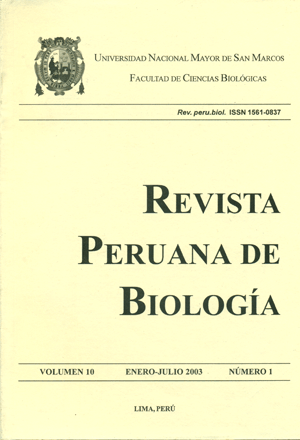Plant remains of archaeological site Casa Vieja, Callango (Ica)
DOI:
https://doi.org/10.15381/rpb.v10i1.2476Keywords:
paleoethnobotany, plant remains, Ica, Casa Vieja, Callango, PeruAbstract
A paleoethnobotanical study was carried out at the Middle Horizon archaeological site of Casa Vieja, located in Callango within the Lower Ica Valley. A total of 23 species were identified, all determined to be of the Magnoliopyta Division, 78 % (or 18 species) were Magnoliopsid and 22% (or 15 species) Liliopsid. The Fabaceae are the best represented family with 6 species. Most of the analyzed samples correspond to seeds of Gossypium barbadense “cotton”. Seventy percent of the species were probably used as food; 48% for artifact-making and construction and 52% for medicinal and curative purposes.Downloads
Downloads
Published
Issue
Section
License
Copyright (c) 2003 José Roque, Asunción Cano, Anita Cook

This work is licensed under a Creative Commons Attribution-NonCommercial-ShareAlike 4.0 International License.
AUTHORS RETAIN THEIR RIGHTS:
a. Authors retain their trade mark rights and patent, and also on any process or procedure described in the article.
b. Authors retain their right to share, copy, distribute, perform and publicly communicate their article (eg, to place their article in an institutional repository or publish it in a book), with an acknowledgment of its initial publication in the Revista Peruana de Biologia.
c. Authors retain theirs right to make a subsequent publication of their work, to use the article or any part thereof (eg a compilation of his papers, lecture notes, thesis, or a book), always indicating its initial publication in the Revista Peruana de Biologia (the originator of the work, journal, volume, number and date).






